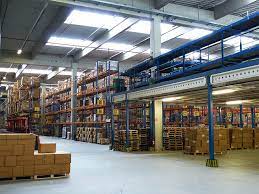Views: 33
Logistics And Supply Chain Management | Streamline Operations

Logistics centers around admission and supply chain management on yield. In any case, when these two groups cooperate, it can change your business and spending plan.
While Coronavirus offered a sobering sign of the restrictions of our public healthcare system, it likewise shed light on the previously “undetectable” supply chain system we as a whole depend on. Promptly after the pandemic, deficiencies and postpones uncovered the effect and relative delicacy of the huge organization, disrupting our regular routine and work.
In spite of our aggregate brief training on supply chain system management, there remains a lot of disarray about where the logistics capability ends and the supply chain management begins. Be that as it may, understanding the thing what matters is the most vital phase in working on your organization’s productivity, so the differentiation is significant.
Considering that significant objective, today we’re finding an opportunity to unravel the jobs of buying, logistics, and supply chain management within organizations.
Enhance your business efficiency with our Logistics and Supply Chain Management solutions designed to streamline operations, reduce costs, and boost productivity. We specialize in freight forwarding, warehousing, inventory control, last-mile delivery, and supply chain optimization to help businesses in Nigeria and beyond achieve seamless operations.
Whether you run an e-commerce store, manufacturing company, or distribution business, our logistics expertise ensures fast delivery, reliable tracking, and reduced downtime. With advanced technology and a customer-focused approach, we provide end-to-end logistics support that improves decision-making and maximizes profits.
Partner with us today for cost-effective supply chain services tailored to your business needs. Optimize your operations with trusted logistics solutions that give you a competitive edge.
Keywords included: Logistics in Nigeria, Supply Chain Management, streamline operations, warehousing solutions, last-mile delivery, freight forwarding, e-commerce logistics, supply chain optimization.
Toward the end of this article, you’ll be aware:
The significant elements of the logistics and Supply Chain Management departments within an association.
How logistics and supply chain management vary, and where they cross over.
How supply chain management and logistics can cooperate to create improved results.
What is logistics?
In straightforward terms, the logistics cycle centers around assessing new providers and working with existing ones to supply unrefined components, products, and services for your business. The logistics capability is generally one of relationship management. Extraordinary logistics groups have areas of strength for encouragement with both their internal clients and their external providers to meet functional goals.
Logistics serves as an essential extension between the money group and departmental partners in larger associations, making it more straightforward for divisions to get what they need to deliver products while giving responsibility and information to financial endorsement.
Logistics is some of the time mistaken for buying. While the two terms are utilized interchangeably within numerous associations, there is a difference. Where buying portrays the demonstration of getting and paying for materials, logistics covers a lot broader scope of activities, for example,
Needs ID: Understanding organization needs and drives, creating estimates, and anticipating asset acquisition to fulfill time constraints.
Supply management: Taking care of the provider lifecycle from assessment and onboarding to recharging or end.
Discussion: Utilizing benchmarking and utilizing connections to get the best terms and evaluating.
Contract the executives: Guaranteeing providers meet agreement terms and convey products on anticipated courses of events.
Receipt of merchandise: Getting and accommodating solicitations against the buy demand, buy request, and solicitations to guarantee precision and right conveyance of products.
Payment: Supporting, coding, and handling provider installments sooner rather than later.
What is Supply Chain Management (SCM)?
A supply chain is the organization of suppliers, service providers, strategic accomplices, and other associations who cooperate to supply organizations with natural materials, make those materials into items, and deliver them to the end-client. Where logistics is the extension between upstream providers and the association, store network executives are the scaffold between the downstream organization and the special and operations accomplices, interfacing the organization and its clients.
It’s essential to take note of that production network; the board is something beyond transporting merchandise. While conveyance is surely important for the store network board, it addresses just a small part of the overall capability. Dealing with the assembly and the progression of merchandise to your purchasers involves a substantially more intricate arrangement of cycles.
Supply chain management teams are answerable for:
Stock administration: Overseeing and following the admission of both unrefined components and completed products. Keeping up with stock levels of essential parts to meet production schedules.
Manufacturing: The cycle and timetable of transforming unrefined substances into items, and the strategies for further developing effectiveness in their production.
Supply chain risk management: Assessing the steadiness of the inventory network organization, and the capacity of your providers to assist you with getting merchandise to showcase on time and at the anticipated cost.
Quality control: working on the general state of items and diminishing assembly issues and item surrenders.
Delivery and return management: Getting completed items from the assembling site or discount stockrooms to the distribution focuses (retailers, and so on) through coordinated factors suppliers. Dealing with returns of damaged or undesirable items.
How do Logistics and supply chain management differ?
Logistics and supply chain share the central goal of driving hierarchical achievement; however, they accomplish this in various ways. Logistics is a subset of the general supply chain process.
A few vital contrasts between the two are:
Logistics is “what goes in” regarding creation. This implies that logistics experts’ primary objective is to get materials and services for use. Supply chain management is “what emerges” from those materials. Supply chain experts are worried about taking the obtained crude labor and products and changing them into items.
Logistics is an emotionally supportive network for creation. Logistics network is the board that fills in as the specialist of the production and dispersion of products.
Logistics’ goals are focused on capital proficiency (tracking down cash saving tips and further develop esteem), while supply chain centers around functional effectiveness (tracking down ways of diminishing grinding and conveyance costs).
What do logistics and supply chain management share, practically speaking?
Logistics and supply chain management share a few targets and basic exercises, practically speaking. For instance, the two divisions:
Distinguish cost-saving opportunities
Logistics’ fundamental concern is with spending advancement and identifying cash-saving tips and further developing the organization’s performance execution. On the production network side, the emphasis is on expanding the quality and value of merchandise to work on the topline.
Logistics and supply chain both set aside cash by expanding spend proficiency on new undertakings, dissecting current activities and agreements to acknowledge cost decrease, arranging costs and terms to keep up with the productivity of current providers and merchants at reestablishment time. This might be accomplished by rehearsing a powerful production network methodology or utilizing procurement software for process automation.
Work on functional effectiveness
On the logistics side, productive organization of the buying system reduces the chance of executing purchases and diminishes the time hours important to execute deals.
On the supply chain side, building proficient creation and distribution channels permits you to get merchandise to market more quickly, with more cost-effectiveness. Working on these cycles on either side saves many hours in worker wages and builds the efficiency of your assembly capability.
Construct Solid Provider connections
Solid provider connections play a basic part in both logistics and production networks. By further developing your key obtaining practice with providers and wholesalers, you can use better valuing, decrease the time spent assessing providers, and smooth out capabilities like merchandise demands, request handling, and payment processing.
Ways supply chain and logistics can cooperate better
However, logistics and production networks work autonomously; their coordination is fundamental for progress. They are, generally, the two legs liable for your association’s forward movement.
Three different ways logistics and supply chain can further develop, by and large, execution includes:
Worked on cross-departmental preparation: Arranging an asset portion for the assembling and dispersion capabilities ought to be a group effort. Further developing interdepartmental arrangements can create more precise conjectures, offer a comprehensive perspective on agreement terms and their expected effects, lessen the limitations and warehousing costs, and reduce the time from unrefined components securing to the conveyance of products.
Expanded information straightforwardness: De-siloing information can significantly improve the capacity of the two divisions to reduce lead times, recognize drifts, and acknowledge potential opportunities for cost savings and effectiveness. Coordinated programming can bring the supply chain management interaction into full view, permitting organizations to more readily uphold store network works and further improve execution times from start to finish in the production cycle.
Provider smoothing out: However, logistics may have a very much sharpened favored merchant list. Stretching out that idea to embrace an interdepartmental methodology can all the more completely influence ideal estimating and terms. Doing so can additionally decrease the time and cost of request and installation handling.
By kingkentus








You must be logged in to post a comment.